Simple tips to keep airline travel with your drone headache free.

So, you’re planning a vacation and you want to bring your favorite companion…your drone!
Before you book those flights, read our helpful tips for traveling with a drone.
Protective Case is a must
A drone is certainly an expensive piece of equipment. Whether traveling or not, investing in a protective case for your drone is highly recommended.
In the event you need to check your drone as baggage, a protective case is an absolute must.
A hard-sided protective case, combined with a custom foam interior, keeps sensitive equipment safe and secure during transport…no shifting, no scratches, no damage. Protective cases are crush and impact resistant and feature latches that won’t pop open under stress. Some even include pressure-release valves and can be padlocked to keep equipment safe from theft. Just be sure to purchase a TSA approved padlock if you go this route.
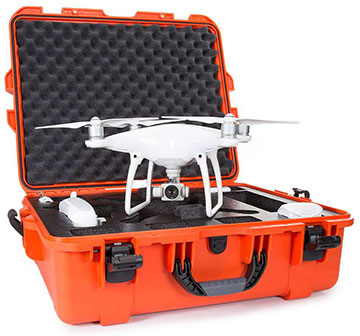
Also, it’s a good idea to keep the case free of logos, branding, etc. An ordinary looking protective case reduces the risk of additional airline scrutiny (which often comes with drones) as well as interest from would-be thieves.
Find the right protective case for your drone.
Of course, the best option is to treat your done as a carry-on. And, as long as you comply with the carry-on size restrictions for the airline, you should have no problem.
Carrying your drone reduces the risk of damage and theft. However, it is still a good idea to find a soft protective case for your drone.
When choosing a soft protective case, make sure it meets the airlines carry-on requirements and offers adequate padding to protect your equipment from the bumps and jostles of flight.
Traveling with LiPo batteries
When handled improperly, LiPo batteries can be extremely dangerous. Quick changes in temperature and air pressure make LiPo batteries susceptible to catching fire. As such, there are several requirements for traveling with LiPo batteries on airlines.
Current International Air Transport Association (IATA) Dangerous Goods Regulations allows passengers to bring LiPo batteries inside carry-on luggage but there are precautions you need to take. Remember, never check LiPo batteries inside your luggage.
Advanced preparation is key when traveling with LiPo batteries.
- Deplete your batteries before you transport them. Batteries must be transported at a state of charge (SoC) not exceeding 30% of their rated design capacity.
- Remove depleted batteries, protect the battery terminals from short circuit.
- Place batteries inside a separate fire proof LiPo safety bag.
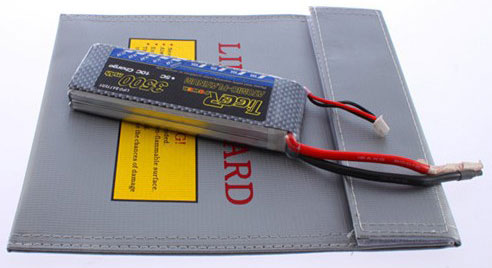
Remember, never travel with damaged or puffy LiPo batteries. Instead, follow the proper protocol for disposing LiPo batteries.
Read more about the FAA guidelines and travel with LiPo batteries.
Most airlines allow 2 lithium batteries over 100 watt hours. Of course, each airline may have different requirement when it comes to LiPo batteries.
To eliminate any hassle on the day of travel, check with the airline in advance to make sure you are in compliance.
Come prepared
We all want to fly our drones without incident, however, mishaps do occur. Plan ahead! Prepare and pack a basic repair kit.
Many operators take into consideration the last few repairs their drone needed and pack the tools and equipment needed to fix the issue. Keep your repair kit smart, simple and lightweight.
Check destination regulations
Regulations regarding drone use vary from state to state; some have additional requirements, others do not. It is your responsibility to be aware of local regulations and stay in compliance.
Read more about current sUAS state laws.
When traveling internationally, a little advanced homework will save you a lot of headaches. Some countries require that you declare your drone upon entry. Others require you to fill out an application prior to travel.
Follow these travel tips for drone users and book those flights! A little advanced preparation ensures your trip is enjoyable and a flying success.
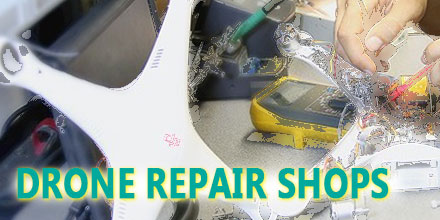 Today, thanks to a continued decrease in price, drones are now a fairly mainstream product. The skies, which were once the domain of experienced pilots, are filling with newbie operators trying their hand at drone flight.
As such, some have discovered that “ready-to-fly” – as many drones are marketed – can really mean, “ready-to-crash”. Of course, even veteran operators experience the odd mishap or two.
When it inevitably occurs, a crash can impact the vehicle in a number of ways – from slight damage to outright destruction or complete loss of the vehicle.
So, what should you do in the event your drone requires repairs?
While some may have the skill and confidence to make their own repairs, other may hesitate. After all, these technological wonders, though more affordable, still cost hundreds of dollars. For the hesitant, perhaps a professional drone shop is the answer.
But, what should you look for when choosing a shop? How do you get about getting your drone fixed? And how much will it cost?
Read on to discover answers to these commonly asked questions.
Today, thanks to a continued decrease in price, drones are now a fairly mainstream product. The skies, which were once the domain of experienced pilots, are filling with newbie operators trying their hand at drone flight.
As such, some have discovered that “ready-to-fly” – as many drones are marketed – can really mean, “ready-to-crash”. Of course, even veteran operators experience the odd mishap or two.
When it inevitably occurs, a crash can impact the vehicle in a number of ways – from slight damage to outright destruction or complete loss of the vehicle.
So, what should you do in the event your drone requires repairs?
While some may have the skill and confidence to make their own repairs, other may hesitate. After all, these technological wonders, though more affordable, still cost hundreds of dollars. For the hesitant, perhaps a professional drone shop is the answer.
But, what should you look for when choosing a shop? How do you get about getting your drone fixed? And how much will it cost?
Read on to discover answers to these commonly asked questions.

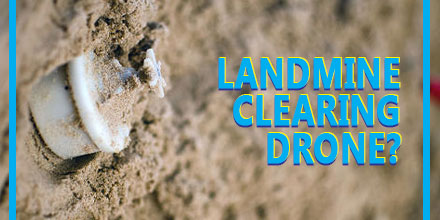 A landmine clearing drone may sound incredible. However, a fourteen-year-old from India has designed a machine that does just that – an anti-landmine drone that can detect and clear landmines.
Harshwardhan Zala found inspiration for his creation while watching news footage.
“I learned that a large number of soldiers succumb to injuries sustained due to landmine blasts while defusing them manually,” Zala said in an interview with the Times of India.
The news report got Zala's mind spinning. In response, Zala designed and constructed a drone to dispose of landmines in a safer manner with less risk to human life.
The first few vehicles were funded by Zala's parents.
“I started making drones on my own and set up an interface with a base station but realized I need to do more,” said Zala. “So I fixed payloads that detect landmines.”
Those small beginnings quickly changed when he won an innovation prize at the L.D. College of Engineering in Gujarat. Soon after, Zala found himself at Google headquarters where he was invited to share his invention with investors.
And most recently, the government of India at the Vibrant Gujarat Summit, granted the designer a contract to produce these drones for use in war zones.
A landmine clearing drone may sound incredible. However, a fourteen-year-old from India has designed a machine that does just that – an anti-landmine drone that can detect and clear landmines.
Harshwardhan Zala found inspiration for his creation while watching news footage.
“I learned that a large number of soldiers succumb to injuries sustained due to landmine blasts while defusing them manually,” Zala said in an interview with the Times of India.
The news report got Zala's mind spinning. In response, Zala designed and constructed a drone to dispose of landmines in a safer manner with less risk to human life.
The first few vehicles were funded by Zala's parents.
“I started making drones on my own and set up an interface with a base station but realized I need to do more,” said Zala. “So I fixed payloads that detect landmines.”
Those small beginnings quickly changed when he won an innovation prize at the L.D. College of Engineering in Gujarat. Soon after, Zala found himself at Google headquarters where he was invited to share his invention with investors.
And most recently, the government of India at the Vibrant Gujarat Summit, granted the designer a contract to produce these drones for use in war zones.
 January 16, 2017 – NuWaves Engineering has announced near completion on the Internal Research and Design (IRaD) phase of their miniaturized VHF/UHF RF bidirectional amplifier (BDA).
The NuPower™ Xtender™ 16A06A model features high linearity performance, small size and weight, high ACLR, and broad supply voltage range. It is a low-cost solution.
Initial low rate production is scheduled to start early February with testing starting shortly after. Demo units will be available by late March.
The NuPower™ Xtender™ 16A06A will provide 4 Watts of linear power over the frequency range of 225 MHz to 512 MHz. The BDA will produce greater than 10 Watts of saturated output power for applications where linearity is not required (i.e., constant envelope waveforms).
Available as a circuit card assembly or an enclosed module, this BDA provides the system integrator with the choice of a small, lightweight assembly for highly embedded designs, or a module for rugged reliability under harsh conditions.
“We are excited to add this bidirectional amplifier module to our NuPowerTM XtenderTM line of products," said Jeff Wells, President and CEO of NuWaves Engineering. "This product is targeted at the unmanned aircraft system (UAS) market, filling the gap in the market for small, linear VHF/UHF power amplifiers."
January 16, 2017 – NuWaves Engineering has announced near completion on the Internal Research and Design (IRaD) phase of their miniaturized VHF/UHF RF bidirectional amplifier (BDA).
The NuPower™ Xtender™ 16A06A model features high linearity performance, small size and weight, high ACLR, and broad supply voltage range. It is a low-cost solution.
Initial low rate production is scheduled to start early February with testing starting shortly after. Demo units will be available by late March.
The NuPower™ Xtender™ 16A06A will provide 4 Watts of linear power over the frequency range of 225 MHz to 512 MHz. The BDA will produce greater than 10 Watts of saturated output power for applications where linearity is not required (i.e., constant envelope waveforms).
Available as a circuit card assembly or an enclosed module, this BDA provides the system integrator with the choice of a small, lightweight assembly for highly embedded designs, or a module for rugged reliability under harsh conditions.
“We are excited to add this bidirectional amplifier module to our NuPowerTM XtenderTM line of products," said Jeff Wells, President and CEO of NuWaves Engineering. "This product is targeted at the unmanned aircraft system (UAS) market, filling the gap in the market for small, linear VHF/UHF power amplifiers."
 So, you’re planning a vacation and you want to bring your favorite companion…your drone!
Before you book those flights, read our helpful tips for traveling with a drone.
So, you’re planning a vacation and you want to bring your favorite companion…your drone!
Before you book those flights, read our helpful tips for traveling with a drone.
 Also, it’s a good idea to keep the case free of logos, branding, etc. An ordinary looking protective case reduces the risk of additional airline scrutiny (which often comes with drones) as well as interest from would-be thieves.
Also, it’s a good idea to keep the case free of logos, branding, etc. An ordinary looking protective case reduces the risk of additional airline scrutiny (which often comes with drones) as well as interest from would-be thieves.
 Remember, never travel with damaged or puffy LiPo batteries. Instead, follow the proper protocol for disposing LiPo batteries.
Remember, never travel with damaged or puffy LiPo batteries. Instead, follow the proper protocol for disposing LiPo batteries.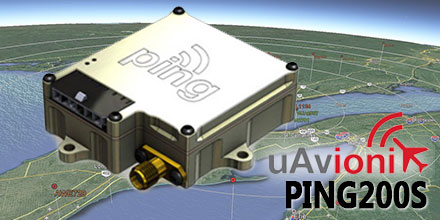 January 6, 2017 – uAvionix continues to roll-out innovative products within the Automatic Dependent Surveillance-Broadcast (ADS-B) arena.
Their latest addition? The Ping200S Mode S Transponder, which just received FCC approval.
The Ping200S provides a unique combination of small size, low power and high visibility. All these factors make it an ideal choice for drones and other beyond line of sight UAV operations.
“We are excited to offer Ping200S to the market,” said Paul Beard, CEO of uAvionix. “Until now, operators requiring a transponder had to choose between unlicensed devices or heavier, power-hungry legacy solutions.”
January 6, 2017 – uAvionix continues to roll-out innovative products within the Automatic Dependent Surveillance-Broadcast (ADS-B) arena.
Their latest addition? The Ping200S Mode S Transponder, which just received FCC approval.
The Ping200S provides a unique combination of small size, low power and high visibility. All these factors make it an ideal choice for drones and other beyond line of sight UAV operations.
“We are excited to offer Ping200S to the market,” said Paul Beard, CEO of uAvionix. “Until now, operators requiring a transponder had to choose between unlicensed devices or heavier, power-hungry legacy solutions.”
 Legislation introduced in the state of Washington aims to limit drone interference for some very special residents…an endangered population of Orcas.
These Orcas, also known as the southern resident killer whales, are the smallest of four resident communities within the area. It is the only killer whale population listed as endangered by the U.S. Fish & Wildlife Service. In addition, they are protected under the Endangered Species Act.
The proposed bill requires drone operators to maintain a 200-yard buffer, in all directions, from any southern resident killer whales. This buffer already applies to boats, vessels and other objects that might encroach on the animals.
However, the existing law was unclear as to whether or not the line other objects applied to drones and other sUAS.
Legislation introduced in the state of Washington aims to limit drone interference for some very special residents…an endangered population of Orcas.
These Orcas, also known as the southern resident killer whales, are the smallest of four resident communities within the area. It is the only killer whale population listed as endangered by the U.S. Fish & Wildlife Service. In addition, they are protected under the Endangered Species Act.
The proposed bill requires drone operators to maintain a 200-yard buffer, in all directions, from any southern resident killer whales. This buffer already applies to boats, vessels and other objects that might encroach on the animals.
However, the existing law was unclear as to whether or not the line other objects applied to drones and other sUAS.
